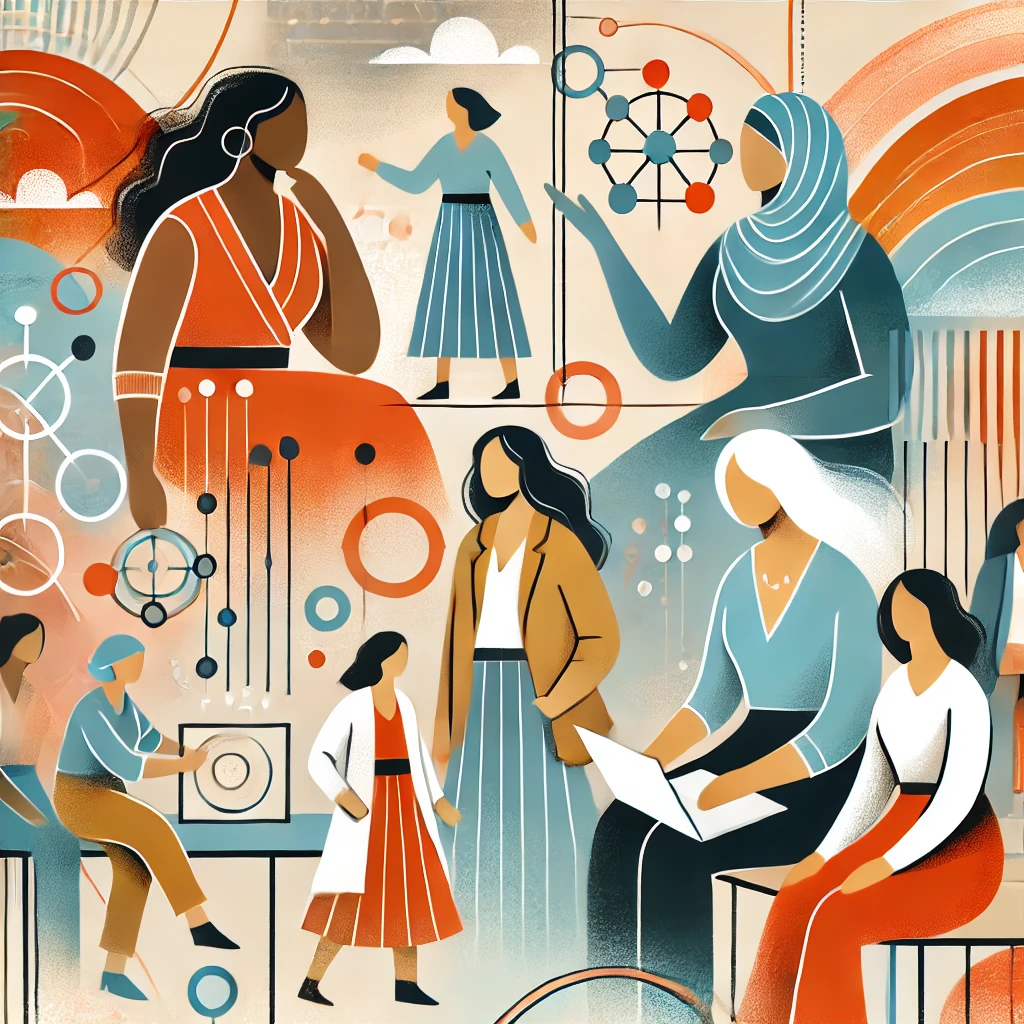As conversations about diversity and inclusion roll through news cycles — sometimes celebrated, sometimes attacked — I’ve been reflecting on something that feels increasingly obvious in our sector.
Women are already leading.
Not hypothetically. Not someday. But right now — across civil society, across communities, and across the quiet places where real systems-change often begins.
This isn’t to deny that representation gaps still exist (they do). Or that women face systemic barriers to power and resources (they absolutely do). But if we only look at leadership through the narrow lens of job titles and board seats, we risk missing what’s already true.
Women are sustaining the work. They are holding the systems together.
Leadership Looks Different Here
In the world AMS works in — social impact, education, humanitarian work — leadership is rarely glamorous. It doesn’t always come with a corner office or media profile. It often looks like early mornings in classrooms, long hours running community centres, late nights closing funding gaps.
We see it in our clients and partners every day.
Women leading refugee education programmes in Lebanon. Women developing early childhood interventions in Jordan. Women building digital movements for environmental justice or social change.
None of this is accidental. It reflects a pattern we should name.
Globally, we know that women’s leadership correlates with better outcomes.
Peace agreements negotiated with women at the table are 35% more likely to last 15+ years (UN Women).
Women-founded businesses often deliver more revenue per dollar invested.
And in the nonprofit sector, women are over-represented in the very roles — education, healthcare, community mobilisation — that sustain social infrastructure.
But it remains under-recognised. And under-resourced.
The Gap Between Contribution and Recognition
So why hasn’t this translated into equal representation in formal leadership roles?
Partly, it’s structural. Women face historic underinvestment — particularly in civil society, where resources are scarce to begin with. Globally, there is a $1.7 trillion funding gap for women-owned small businesses.
Partly, it’s cultural. Our traditional models of leadership — visible, individual, dominant — do not always reflect the collaborative, systems-oriented work that many women are already doing.
And partly, I think, it’s a question of how we tell the story.
Communications Shapes What We Value
At AMS, we think a lot about narrative power. About how strategy and communications can either reinforce narrow ideas of success — or help expand them.
This is not just a marketing challenge (although poor messaging certainly doesn’t help). It’s a systems challenge.
If leadership is only recognised when it looks like being the most senior person in the room, we will keep overlooking the very people who hold the work together.
But if we start naming leadership where it happens — in middle management, in community networks, in unpaid care work, in mentorship and teaching — we begin to change what is valued.
The Future Is Already Here — If We Choose to See It
None of this is about lowering standards. Quite the opposite.
It’s about recognising excellence where it already exists. About resourcing the people and organisations who are quietly building systems that work.
It’s about recognising that civil society — this often-sidelined part of the economy — is where some of the most creative, resilient, and human-centred leadership happens.
Women are not waiting to be given permission to lead. They never were.
The question is whether our systems — and our communications — are ready to catch up.
If your nonprofit or organisation needs thoughtful comms support, take a look at our website and get in touch.
A version of this blog – written by Angela – originally appeared on LinkedIn, for the Centre for the Study of Civil Society.




